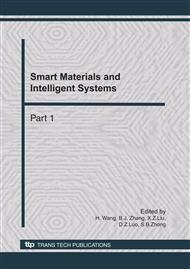p.409
p.414
p.419
p.424
p.428
p.433
p.439
p.444
p.448
The Study on Anti-Icing Critical Current of Overhead Conductors
Abstract:
Preventing high-voltage power transmission lines ice-covered is ensure to power system the important guarantee of safe and reliable operation in the extreme weather. The size of anti-ice critical current is reasonable or not will directly affect the anti-ice effect. This paper conducts a comprehensive analysis of thermal balance process of the wire surface, and proposes a critical current model to anti-ice. In this paper, the minimum melting ice current of under the ultra-thin ice cover (0.05mm) circumstance is regarded as the anti-ice currents. Finally, by the model established in this article, calculating critical current of some typical wires in Hunan electric power grid, and the result is compared with result of existing literature made the critical current model, verified accuracy of model.
Info:
Periodical:
Pages:
428-432
Citation:
Online since:
October 2010
Authors:
Price:
Сopyright:
© 2011 Trans Tech Publications Ltd. All Rights Reserved
Share:
Citation:


